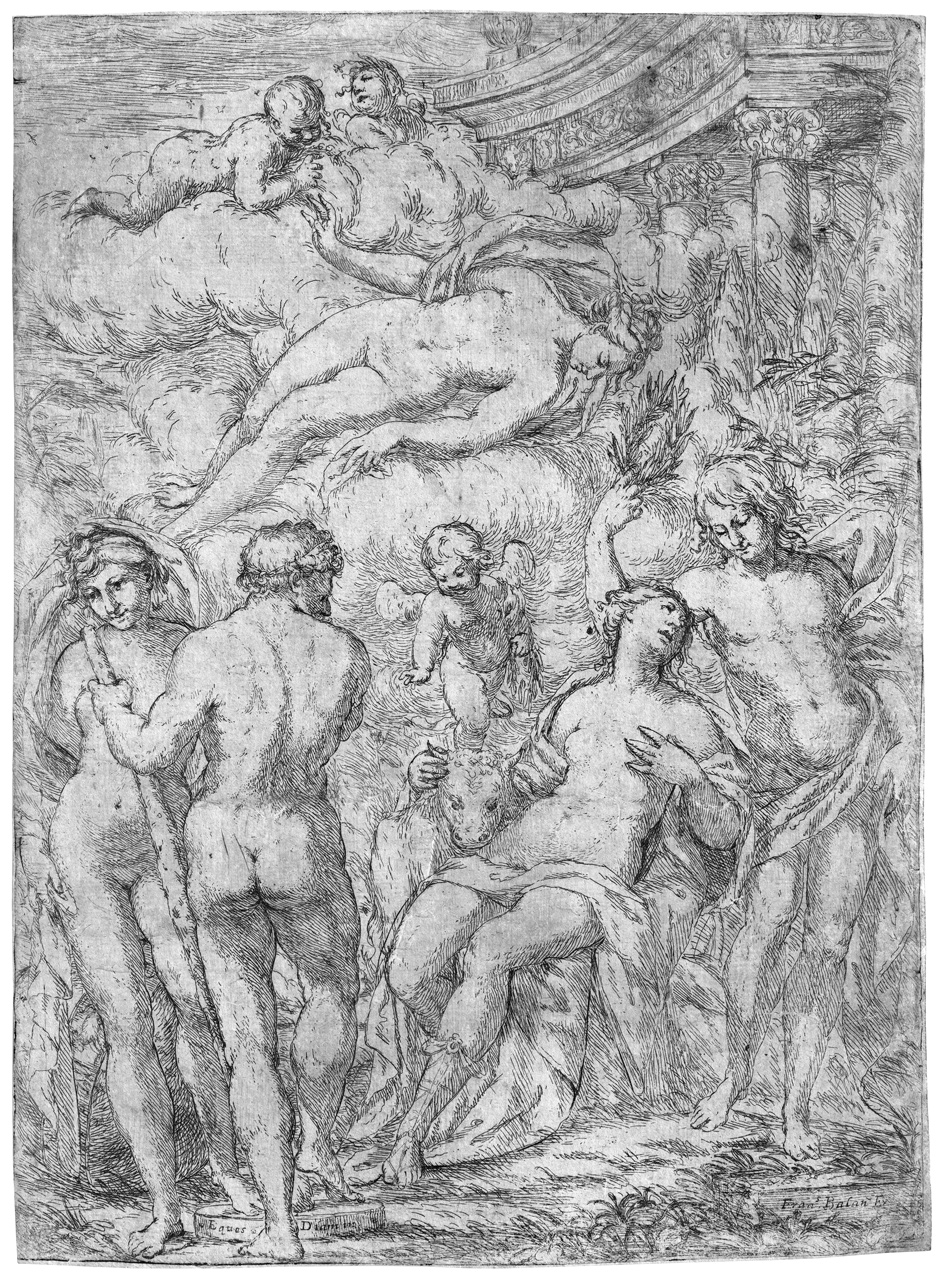Loading the page ...
Giuseppe Diamantini
(1621–1705, Fossombrone)
Allegory with Mythological Figures. Etching. 31.7 x 23 cm. Bartsch XXI, 274, 12; The Illustrated Bartsch, 47, Part 3, Commentary, p. 36, 012. Watermark: Tre Lune.
Giuseppe Diamantini was one of the foremost Venetian etchers in the second half of the Seicento, although he actually hailed from the Marches. Trained in Bologna, where he was apprenticed to Giovanni Andrea Sirani and greatly influenced by the work of Simone Cantarini, Diamantini settled in the 1650s in Venice, where he was to work as a painter and etcher for almost the whole of his life. He produced a quite substantial printed oeuvre whose appeal derives from the impetuous, spontaneous style and the painterly, atmospheric effect. Many of his works were published in very small editions, which accounts for the rarity of the present etching. Diamantini’s artistic signature is of great individuality and instantly recognisable. In all probability the artist dispensed with any preliminary drawings and etched his compositions straight onto the plate. The linework is correspondingly free and lively and eschews extensive detail in favour of tonal effect.
The iconography of the present etching has not been finally clarified. Hercules can be seen from the back in the left foreground. The globe behind the naked woman on his left indicates that she is probably Urania. The female figure sat in the centre of the picture could be Io, whom Jupiter turned into
a heifer. The artist’s conscious renunciation of any clear-cut iconography might have been intentional and it transforms the charming scene into a poetic capriccio fully in keeping with Venetian art. Diamantini was raised to the peerage around 1663; the addition of ‘Eques’ in the signature indicates that the etching was made after this date.
A very fine, lively and tonal impression with thread margins around the partly inky platemark. In excellent condition. Bellini records just three impressions in Berlin, London and Vienna.
Contact us for further information